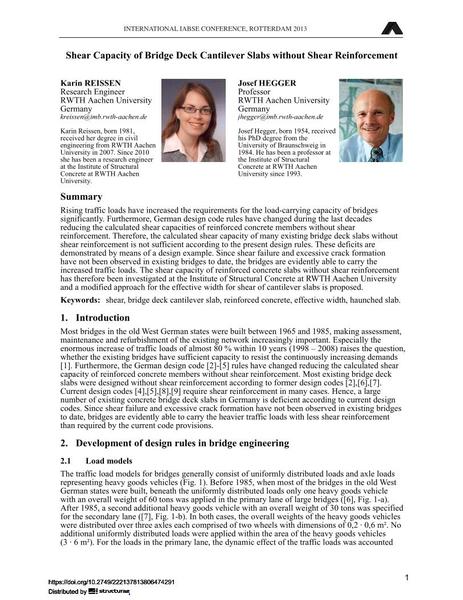Shear Capacity of Bridge Deck Cantilever Slabs without Shear Reinforcement

|
|
|||||||||||
Détails bibliographiques
| Auteur(s): |
Karin Reissen
Josef Hegger |
||||
|---|---|---|---|---|---|
| Médium: | papier de conférence | ||||
| Langue(s): | anglais | ||||
| Conférence: | IABSE Conference: Assessment, Upgrading and Refurbishment of Infrastructures, Rotterdam, The Netherlands, 6-8 May 2013 | ||||
| Publié dans: | IABSE Conference, Rotterdam, May 2013 | ||||
|
|||||
| Page(s): | 78-79 | ||||
| Nombre total de pages (du PDF): | 8 | ||||
| Année: | 2013 | ||||
| DOI: | 10.2749/222137813806474291 | ||||
| Abstrait: |
Rising traffic loads have increased the requirements for the load-carrying capacity of bridges significantly. Furthermore, German design code rules have changed during the last decades reducing the calculated shear capacities of reinforced concrete members without shear reinforcement. Therefore, the calculated shear capacity of many existing bridge deck slabs without shear reinforcement is not sufficient according to the present design rules. These deficits are demonstrated by means of a design example. Since shear failure and excessive crack formation have not been observed in existing bridges to date, the bridges are evidently able to carry the increased traffic loads. The shear capacity of reinforced concrete slabs without shear reinforcement has therefore been investigated at the Institute of Structural Concrete at RWTH Aachen University and a modified approach for the effective width for shear of cantilever slabs is proposed. |
||||
